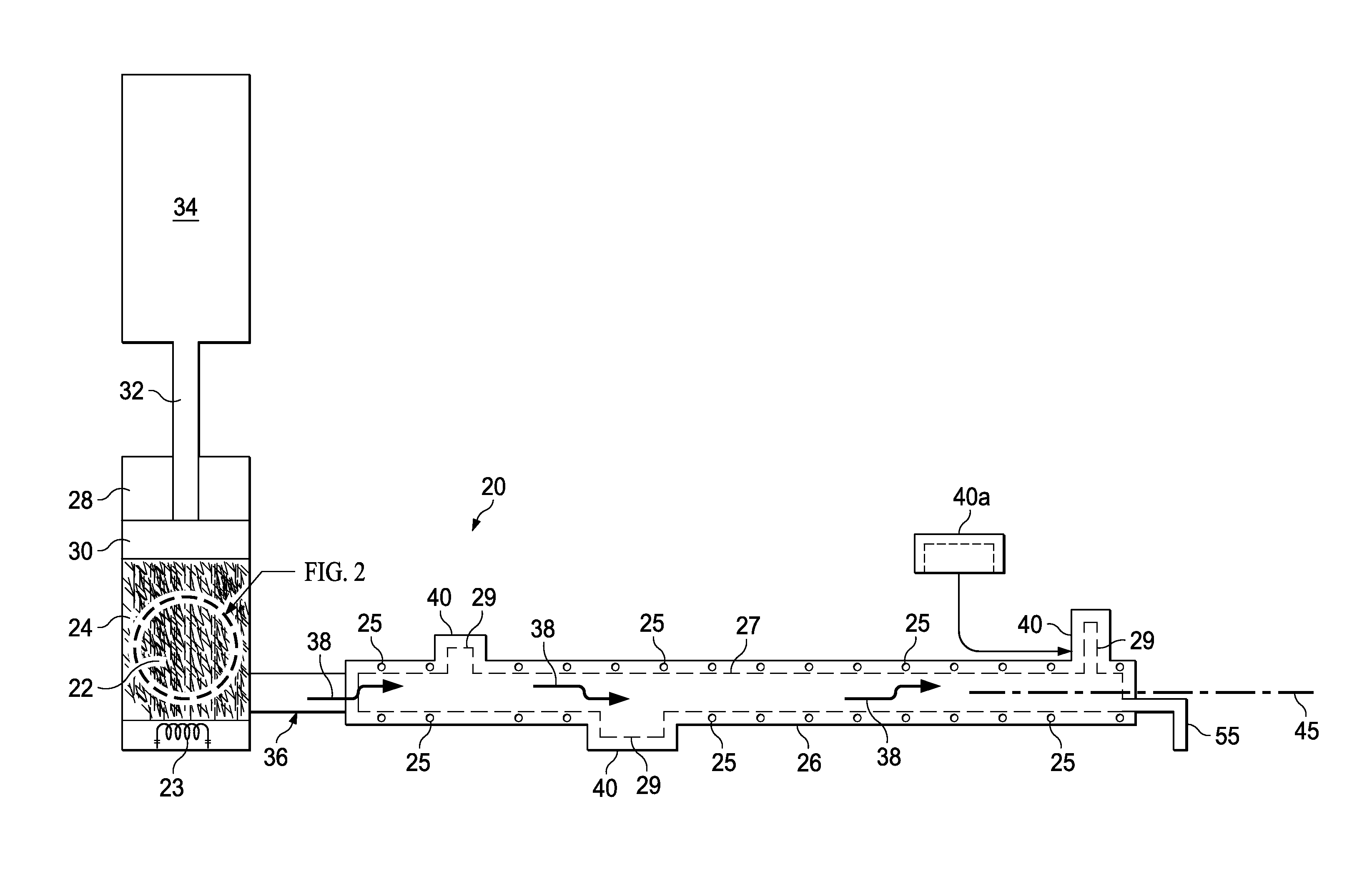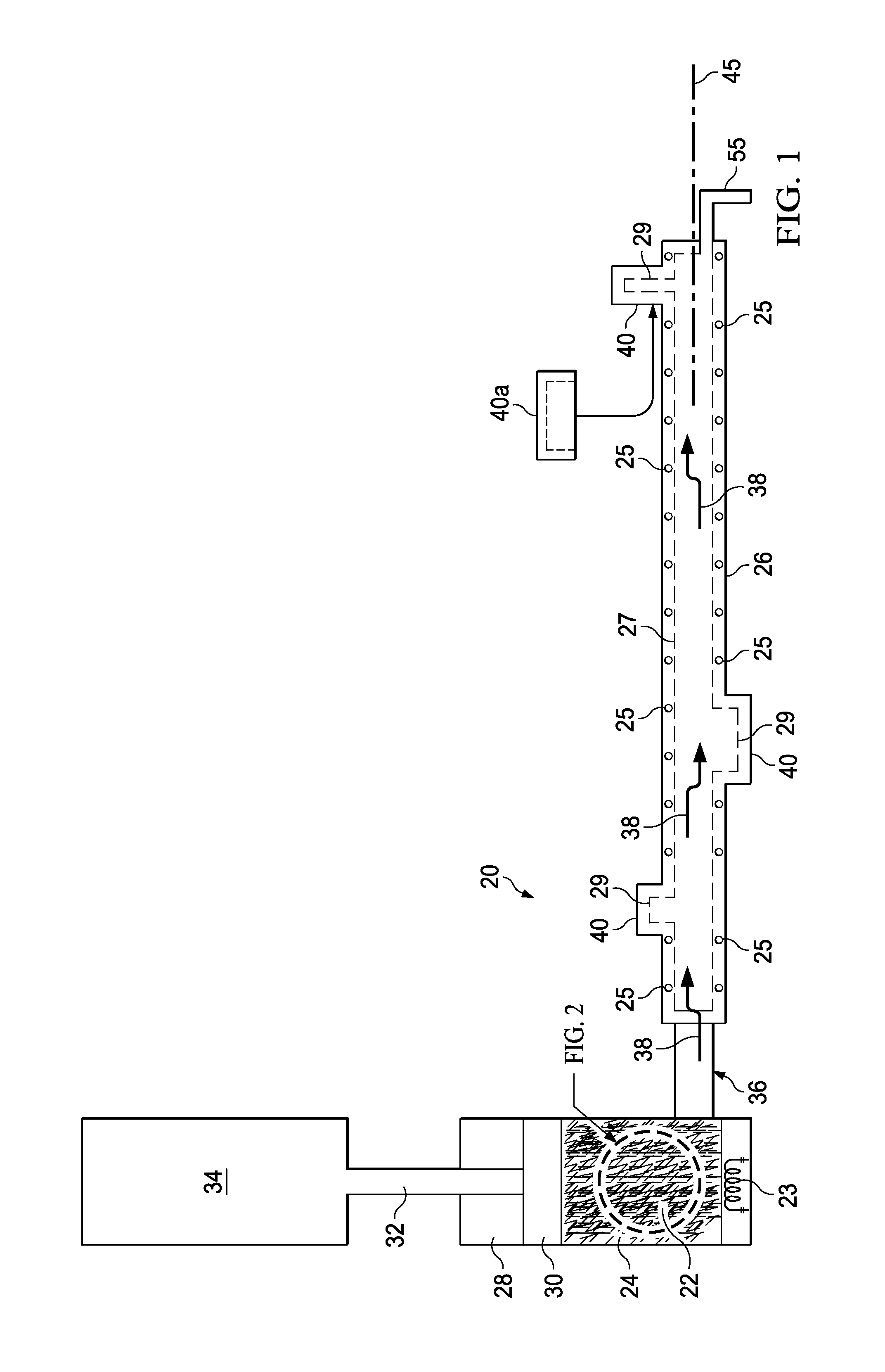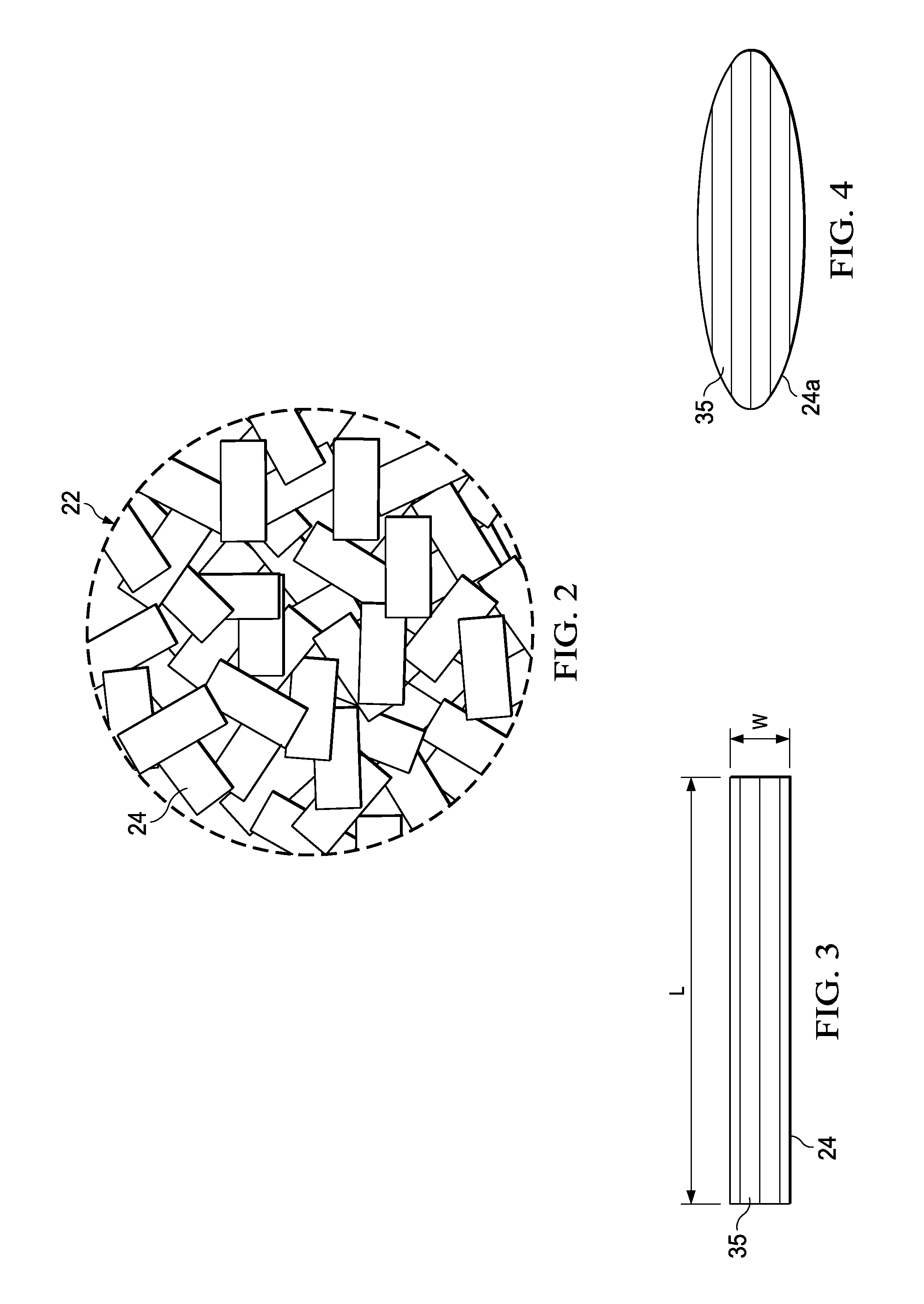Method and apparatus for compression molding fiber reinforced thermoplastic parts
a technology of thermoplastic parts and compression molding, which is applied in the direction of weight reduction, etc., can solve the problems of time-consuming, labor-intensive and labor-intensive composite laminate fabrication process described above, and the inability to integrate part features, so as to reduce or eliminate the effect of touch labor required parts for fabrication and reduced total part weigh
- Summary
- Abstract
- Description
- Claims
- Application Information
AI Technical Summary
Benefits of technology
Problems solved by technology
Method used
Image
Examples
Embodiment Construction
[0032]Referring to FIGS. 1 and 2, the disclosed embodiments relate to apparatus 20 for compression molding any of a variety of elongated thermoplastic resin parts 42 (FIGS. 5-8) that are reinforced with discontinuous fibers. The apparatus 20 broadly includes an elongate mold tool 26 and a charge cylinder 28 adapted to hold a charge 22 comprising a quantity of thermoplastic composite (TPC) flakes 24 that have been pre-consolidated. As used herein, “flakes”“TPC flakes” and “fiber flakes” refer to individual pieces, fragments, slices, layers or masses of thermoplastic resin that contain fibers suitable for reinforcing a part 42. An actuator 34, which may comprise, without limitation, a hydraulic motor, is coupled by a ram rod 32 with a piston 30 within the charge cylinder 28. The charge cylinder 28 may be coupled with one end of the mold tool 26 by an injection port 36 to permit a melted charge 22 to be injected into a mold part cavity 27 in the mold tool 26. In other embodiments, disc...
PUM
| Property | Measurement | Unit |
|---|---|---|
| lengths | aaaaa | aaaaa |
| lengths | aaaaa | aaaaa |
| length | aaaaa | aaaaa |
Abstract
Description
Claims
Application Information
 Login to View More
Login to View More - R&D
- Intellectual Property
- Life Sciences
- Materials
- Tech Scout
- Unparalleled Data Quality
- Higher Quality Content
- 60% Fewer Hallucinations
Browse by: Latest US Patents, China's latest patents, Technical Efficacy Thesaurus, Application Domain, Technology Topic, Popular Technical Reports.
© 2025 PatSnap. All rights reserved.Legal|Privacy policy|Modern Slavery Act Transparency Statement|Sitemap|About US| Contact US: help@patsnap.com



